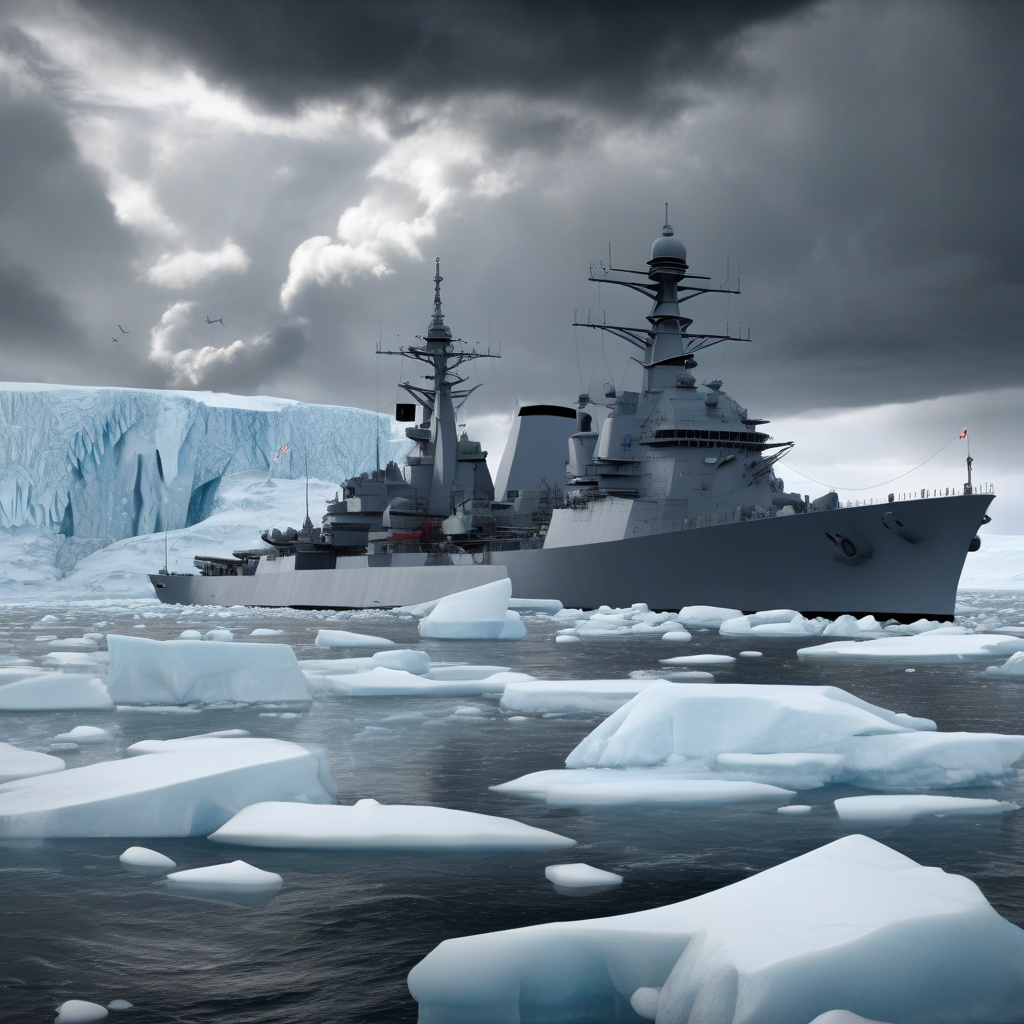UK’s Royal Navy to Utilize AI Technology to Counter ‘Hostile’ Threats, Including Russian Movements in Arctic
Russia’s war efforts in Ukraine show no signs of slowing down any time soon. The ongoing conflict has raised concerns not only within Europe but also globally, especially regarding Russia’s military movements. In response to these escalating tensions, the UK’s Royal Navy is turning to cutting-edge artificial intelligence (AI) technology to enhance its defense capabilities, particularly in monitoring and countering potential threats in the Arctic region.
The Arctic has become a hotspot for geopolitical tensions as melting ice caps open up new maritime routes and access to valuable resources. Russia, in particular, has been increasing its military presence in the region, raising alarms among NATO allies. The UK, as a key member of NATO, has been closely monitoring Russian activities in the Arctic and is now taking proactive measures to bolster its security.
By leveraging AI-driven systems, the Royal Navy aims to improve its surveillance and reconnaissance capabilities in the Arctic, enabling faster and more accurate threat detection. AI technologies can analyze vast amounts of data from various sources, including satellite imagery, radar systems, and underwater sensors, to identify potential hostile activities, such as unauthorized naval intrusions or submarine movements.
One of the key advantages of AI in maritime security is its ability to detect patterns and anomalies that may evade human observation. For instance, AI algorithms can track and predict the behavior of Russian naval vessels based on historical data, helping the Royal Navy anticipate and respond to potential threats more effectively. This proactive approach is crucial in deterring aggressive actions and maintaining stability in the region.
Moreover, AI-powered systems can enhance the Royal Navy’s decision-making process by providing real-time analysis and recommendations to commanders. In a fast-paced and dynamic environment like the Arctic, where conditions can change rapidly, having access to timely and accurate intelligence is paramount. AI can sift through vast data sets, assess risks, and propose optimal courses of action, empowering naval operators to make informed decisions swiftly.
Furthermore, the integration of AI technology aligns with the UK’s broader defense modernization efforts, which prioritize innovation and efficiency. By investing in AI capabilities, the Royal Navy demonstrates its commitment to staying at the forefront of technological advancements in maritime security. This strategic approach not only strengthens the UK’s national defense but also enhances its collaboration with allied nations in safeguarding shared interests.
As the geopolitical landscape continues to evolve, with new security challenges emerging in the Arctic and beyond, the Royal Navy’s adoption of AI technology signifies a proactive response to the changing threat environment. By harnessing the power of AI for maritime surveillance and threat detection, the UK is better positioned to address complex security risks and uphold stability in strategically significant regions.
In conclusion, the UK’s Royal Navy’s decision to leverage AI technology for monitoring ‘hostile’ threats, including Russian movements in the Arctic, underscores the importance of innovation in contemporary maritime security. By embracing cutting-edge AI systems, the Royal Navy is not only enhancing its operational capabilities but also reinforcing its strategic deterrence posture in the face of evolving security challenges.
#RoyalNavy, #AItechnology, #ArcticSecurity, #MaritimeSurveillance, #GeopoliticalTensions












